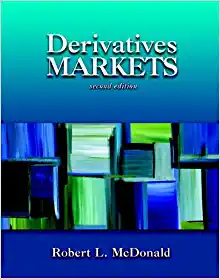Question
Chapter 8 A U.S.-based firm is considering a six- year project in Colombia. The following information is available about the project: Initial investment. The initial
Chapter 8
A U.S.-based firm is considering a six- year project in Colombia. The following information is available about the project:
Initial investment. The initial investment of USD 1,000,000 is used to purchase capital equipment. This equipment will be depreciated straight line to zero. At the end of six years, the remaining equipment will be sold for Colombian Peso (COP) 250,000,000.
Working capital. The investment in working capital is COP 250,000,000. There are no changes in working capital until the end of the project when the full amount is recovered.
Units, price, and costs. The firm will produce 1,500 units of a product annually. The selling price is expected to be COP 750000 in the first year. This price is expected to increase at a rate of 4 percent annually. The direct expense per unit is expected to be COP 250000 in the first year. This is expected to increase at a rate of 7 percent annually. Indirect expenses are expected to be COP 75,000,000 annually. Taxes and miscellaneous. Colombian taxes on income and capital gains are 33 percent. There are no additional withholding taxes. All cash flows are repatriated when generated, and there are no additional U. S. taxes. The parity conditions are assumed to hold between Colombia and the United States. The
FINC 6367 - International finance Excel Homework Page 1
relevant inflation indexes indicate a rate of 2 percent for the United States and 6 percent for Colombia. Spot USDCOP equals 3100. Brady's USD denominated WACC is 12.5 percent.
- Calculate COP cash flows.
- What is the appropriate COP discount rate? Calculate the project NPV.
- Use parity conditions to generate future spot rates. Calculate the project NPV in USD.
- Calculate break- even units.
- Now assume that the COP rate of annual depreciation doesn't follow parity conditions.
- What is the break- even rate of depreciation in COP? Assuming the USD inflation is unchanged, what is the COP inflation rate consistent with this break- even depreciation?
Chapter 9
A Canadian firm is evaluating a project in the United States. This project involves the establishment of a lumber mill in Wisconsin to process Canadian timber. The factory expects to service clients in the construction industry. All cash flow figures are in thousands.
Initial Investment. The initial investment is CAD 35,000. The project is over a period of three years. This investment will be depreciated straight line to zero.
Operating Results. The firm expects two likely scenarios for the first year of operations. Under the favorable scenario (probability of 45%), the firm expects to produce and sell 1,100 units of a product. Under the unfavorable scenario (probability of 55%), it expects to produce and sell only 650 units. The selling price is expected to be CAD 32; the variable expense is expected to be CAD 14, and fixed costs excluding depreciation are expected to be CAD 3,000.
Additional Investment. If the firm encounters the favorable scenario during year 1, it could make an investment of CAD 18,000 to enable it to produce and sell a total of 2,200 units (additional units is 1,100) in the second and third years. The cost parameters remain unchanged with the exception of depreciation. This secondary investment will be depreciated equally in years 2 and 3. If the firm chooses not to make the investment in year 1, the results of year 1 will be repeated during years 2 and 3.
Discount Rate and Miscellaneous. Assume a discount rate of 10 percent and zero taxes.
- Estimate the NPV of the project.
- Estimate the NPV of the option to expand.
Step by Step Solution
There are 3 Steps involved in it
Step: 1

Get Instant Access to Expert-Tailored Solutions
See step-by-step solutions with expert insights and AI powered tools for academic success
Step: 2

Step: 3

Ace Your Homework with AI
Get the answers you need in no time with our AI-driven, step-by-step assistance
Get Started


